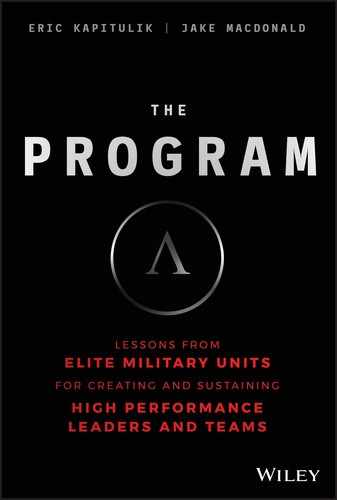39
Mount Everest: Facing the Challenge
AT 8,848 METERS (29,029 FEET), Mount Everest is the world’s tallest mountain. Known as Chomolungma in Tibetan (“Mother Goddess of the Universe”) it was first successfully climbed on May 29, 1953, by Sir Edmund Hillary, a New Zealand beekeeper, and Tenzig Norgay, a Nepali-Indian Sherpa mountaineer. Prior to Mount Everest, Eric had spent a dozen years practicing the necessary skills required to safely attempt it. He had already summited four of the Seven Summits, the highest peaks on each of the seven continents. He had also climbed dozens of other major mountains throughout the world. Eric’s climbing career began while attending the U.S. Marine Corps’ Summer Mountain Leaders Course (MLC) in Pickle Meadows, California. He had just returned from his first deployment overseas when his battalion sent him to this 8-week course where Marines who have attained a rank of sergeant or above are taught to become proficient in all the required skills to conduct mountain warfare operations. Eric attributes both his success as a climber and most importantly, his and his future mountaineering teammates’ safety while doing so, to his weeks spent in Pickle Meadows. These lessons taught by the Marine Corps, reinforced throughout his military career and then on mountains around the world, are one of the major differences between being a good teammate and team leader, and being a great one. These lessons separate great families, athletic teams, or corporations from simply good ones. They will allow us to achieve whatever our own personal summits may be. Our ability to learn and embody these lessons will be key in determining mission success or mission failure on whatever our chosen battlefield. Specifically, mountaineering (and life) is challenging and dangerous. Our success in each is influenced by a host of circumstances that we don’t control. Thankfully, we do control the greatest determining factor: our preparation. Not making excuses and working hard are big parts of our preparation (more on each in Sections 5 and 6), but our ability to do both is made possible only by our being physically and mentally tough. Our ultimate success in mountaineering (and life) is based not on our performance when everything goes well, but rather in those moments when little or nothing does; when we are faced with adversity. It is then then our physical and mental toughness will allow us to still attain the summits (and return to base camp safely) of the mountains in our own lives. We will first briefly discuss the importance of physical fitness and the symbiotic relationship it shares with both physical and mental toughness. We will then define each and, most importantly, examine how we can all develop both within ourselves and our teammates.
